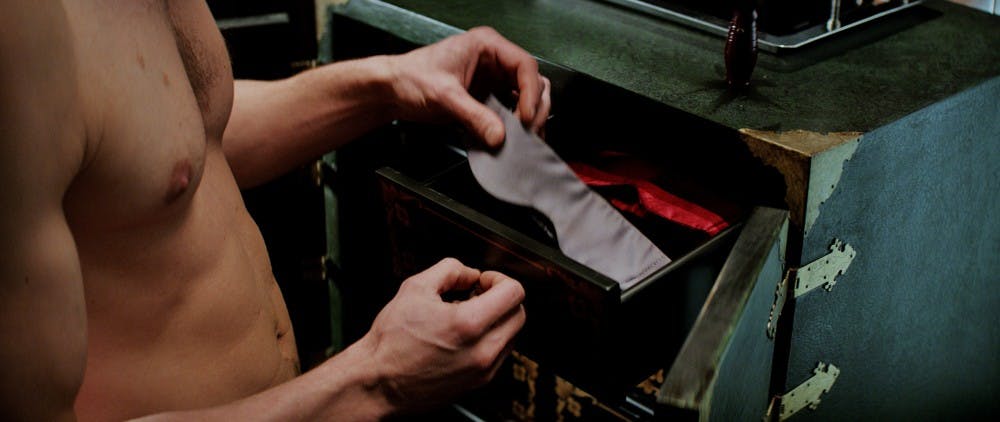What would be the most cliched way to open this review? A question? A statement like, “This is a story of boy meets girl” or “Once upon a time”?
Considering these tropes and cliches is the only lens through which this review of “Fifty Shades of Grey” can begin. Since the best-selling book’s popularity propelled the entire trilogy of novels to a full-on Hollywood franchise, the hype surrounding the film displays pop culture’s current obsession.
The premise of Sam Taylor-Johnson’s (“Nowhere Boy”) zeitgeisty-but-still-a-little-taboo rom-drama is simple (another cliche): young, naive student Anastasia Steele (Dakota Johnson, “Ben and Kate”) meets vaguely characterized handsome business tycoon Christian Grey (Jamie Dornan, “The Fall”) while interviewing him for her college newspaper. After some flirt-staring, labored breathing and several over-the-top gift exchanges, the two begin a sexual relationship.
Christian explains to Ana that he “doesn’t do romance,” and has very specific sexual preferences. Namely, he describes himself as dominant, and asks her to enter into a contract to be his submissive. But this is the most common knowledge about the film. Yes, there is lots of sex. The scenes were shot tastefully and perhaps unwittingly served as a reminder of the double standards enforced by the MPAA regarding male/female sexuality.
Although at times the dialogue suffered from the lameness of its E.L. James “Twilight” fan fiction source material, the film provided several laugh-out-loud moments, with almost a twist of meta humor in Steele’s reactions and comments. Finding the laughs in the weaker moments was not difficult, specifically from the line lifted directly from the novel, delivered in complete seriousness: “I’m fifty shades of f***ed up.”
With her funny, smart, expertly confused performance, Johnson manages to narrowly steal the film from Dornan’s abs and increasingly evident Northern Irish accent. Stoic as ever, it seemed that Dornan’s shirt-removing scenes were shot in slow-motion. Once the initial shock of the first sex scene (which was not that shocking) had passed, the film’s tone varies between stalkerishly uncomfortable and weirdly romantic, a tension which the film’s “cliffhanger” conclusion doesn’t resolve.
However, the story and the film’s leads carried the audience’s attention to the last moment and conveyed exactly what you would expect from a movie like “Fifty Shades of Grey.” The film doesn’t live up to the hype of either good or bad, instead serving as a mediocre exercise in audience endurance and/or enjoyment. “Fifty Shades of Grey” will be seen by millions of people, make millions of dollars, and will continue to pervade the pop culture conversation: good, bad, or “f***ed up.” Two sequels to go.





